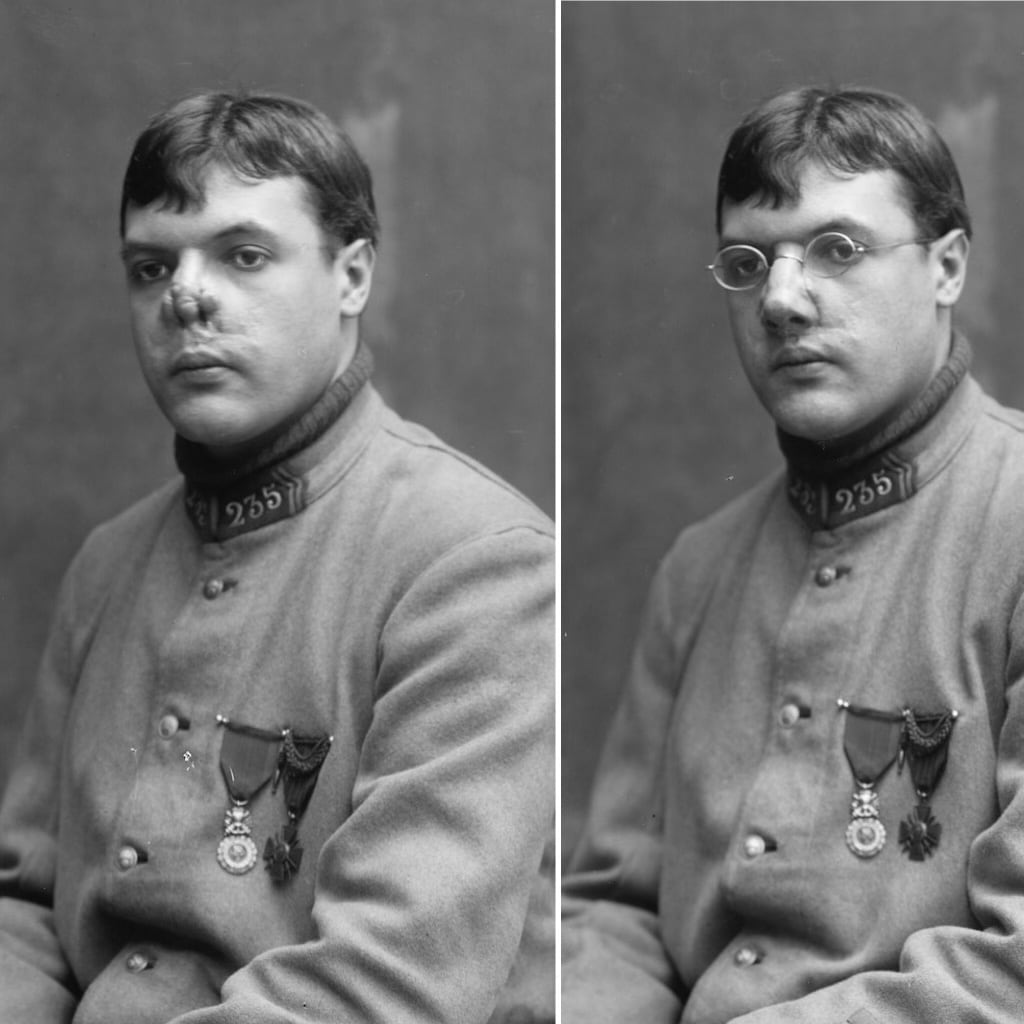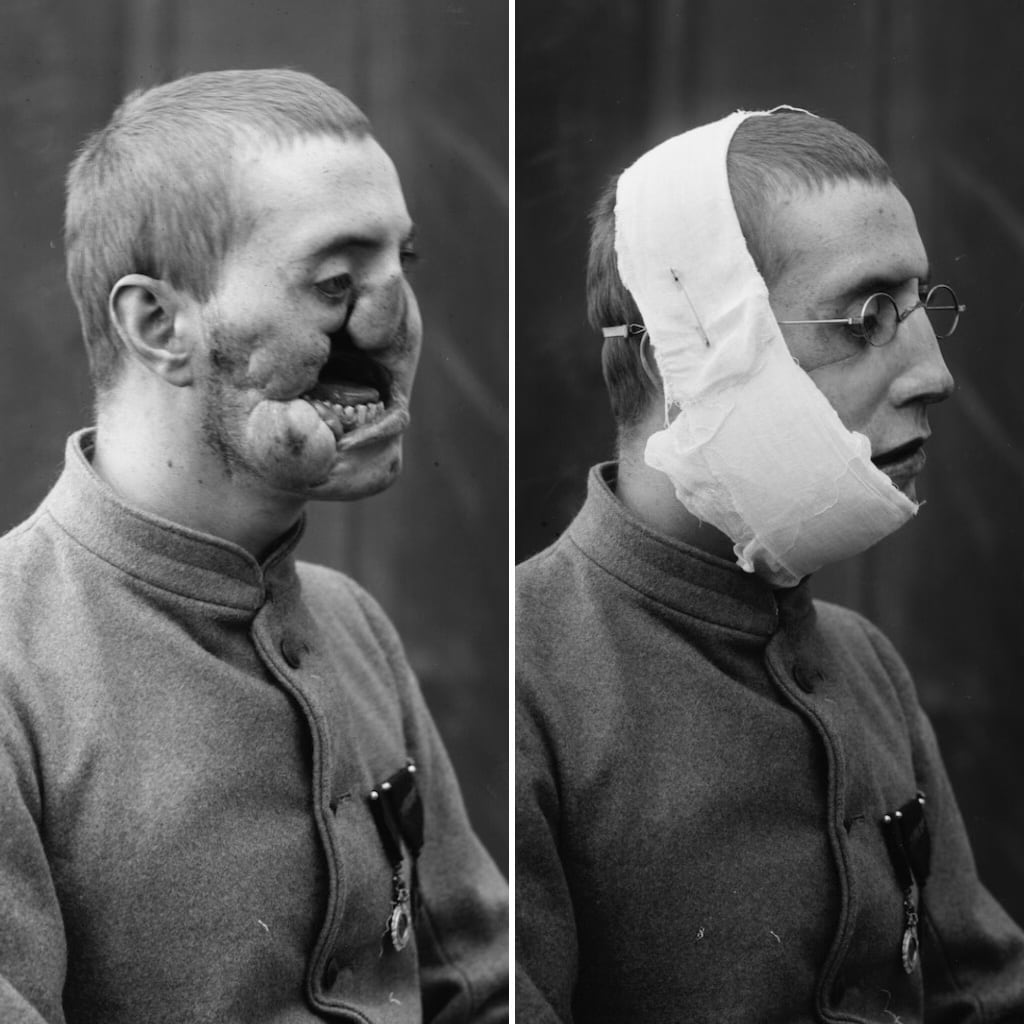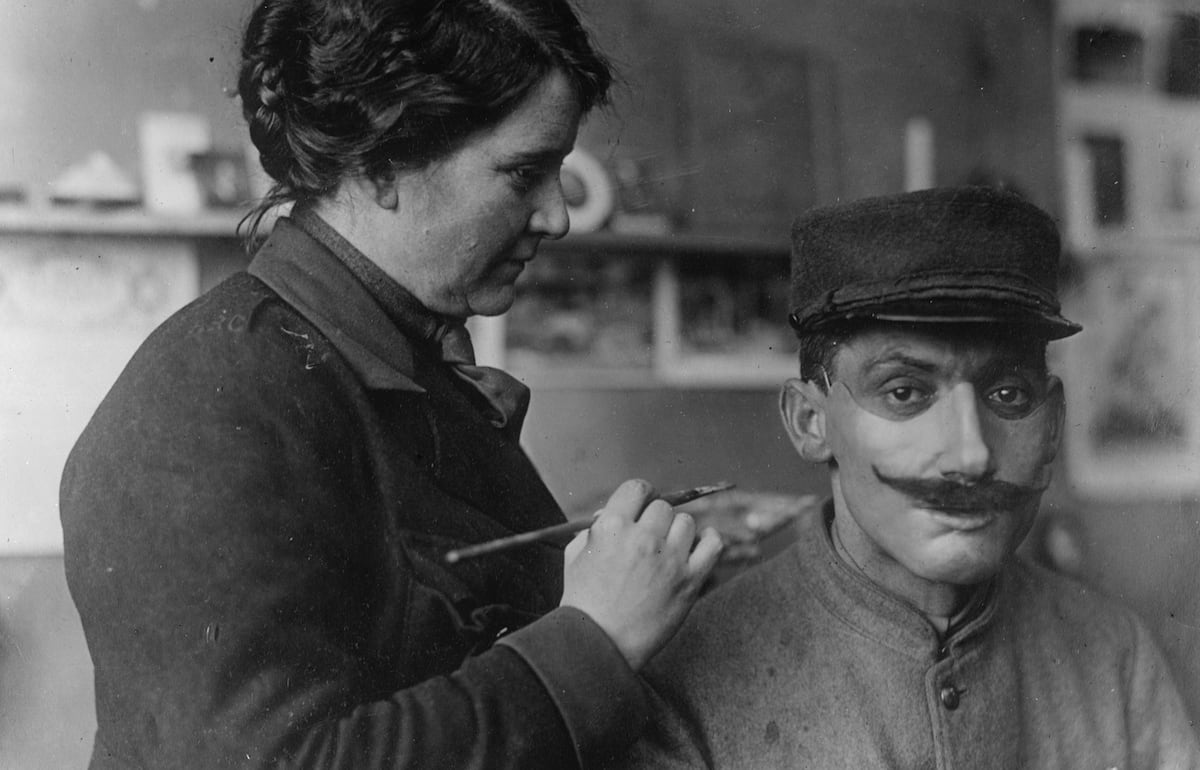As the world and its soldiers went over the top and straight into mechanized warfare, the horrors of large-caliber machine guns and artillery warfare ushered in a new age of gruesome deaths and horrific injuries.
World War I claimed the lives of 8 million men, with another 21 million wounded. An estimated 60,500 British soldiers suffered head or eye injuries, according to a 2011 article in the British Journal Social History of Medicine. The numbers among French and German casualties of war were no doubt similar.
Beyond physical disfigurement, the maiming of a generation of men left many with deep psychological wounds as well.
The “effect on a man who must go through life, an object of horror to himself as well as to others, is beyond description,” wrote Dr. Fred Albee, an American surgeon working in France “…It is a fairly common experience for the maladjusted person to feel like a stranger to his world. It must be unmitigated hell to feel like a stranger to yourself.”
Yet with the help of Anna Coleman Ladd, an American socialite and sculptor turned Red Cross volunteer, some soldiers were once again able to face themselves — and the world.
Brought to France through her husband and appointed to direct the Children’s Bureau of the American Red Cross in Toul during the war, Ladd drew on her talents as a sculptor — she specialized in decorative fountains — to found the Studio for Portrait Masks in Paris in late 1917.
Inspired by British sculptor Francis Derwent Wood, who, in March 1916, started making masks for disfigured British soldiers, Ladd wondered if she could replicate something similar in France.
With plastic surgery still in its infancy, only so much could be done to repair destroyed jaws and missing noses, mouths and eyes.
“One man who came to us had been wounded 2 1/ 2 years before and had never been home,” according to a 1919 report from Ladd’s studio. “He did not want his mother to see how badly he looked.”

Patients who found their way to Ladd’s studio were treated to immense attention and care. A single mask created by Ladd required a month of detail.
“The mask itself would be fashioned of galvanized copper one thirty-second of an inch thick — or as a lady visitor to Ladd’s studio remarked, ‘the thinness of a visiting card,’” according to the Smithsonian Magazine. “Depending upon whether it covered the entire face, or as was often the case, only the upper or lower half, the mask weighed between four and nine ounces and was generally held on by spectacles.”
Calling the men her “brave faceless ones,” Ladd often worked with pre-injury photos to model her plaster cast as closely to the patient’s original appearance as possible.
The real difficulty lay in finding the right paint that had staying power — oil paint chipped too easily — and matched the color of the skin. Ladd found success in using a hard enamel that was easily washable and that, when painted on, had a dull, flesh-like finish.
According to the Smithsonian, Ladd painted the mask while the man himself was wearing it so as to match skin tones as closely as possible.

“Skin hues, which look bright on a dull day, show pallid and gray in bright sunshine, and somehow an average has to be struck,” wrote Grace Harper, the chief of the Bureau for the Reeducation of Mutilés. “The artist has to pitch her tone for both bright and cloudy weather and has to imitate the bluish tinge of shaven cheeks.”
By the end of 1919 Ladd and her four assistants were able to produce 185 masks for disfigured French soldiers. And while that number seemingly pales in comparison to the staggering number of wounded, the impact among those 185 was monumental.
Today, housed at the Smithsonian are a number of ephemera, photographs and letters of Ladd’s. Largely written in French, the sculptor received countless letters from men who were once grim casualties of war.
“I owe you great gratitude … for I wear and will always … wear the marvelous device that you created,” one soldier wrote. “Thanks to you I can live again. Thanks to you I haven’t buried myself in the depths of a hospital for the disabled.”
Another reads, “Thanks to you, I will have a home. … The woman I love no longer finds me repulsive, as she had a right to do. … She will be my wife.”
This story was originally published on HistoryNet.com.
Claire Barrett is the Strategic Operations Editor for Sightline Media and a World War II researcher with an unparalleled affinity for Sir Winston Churchill and Michigan football.
Read the full article here
